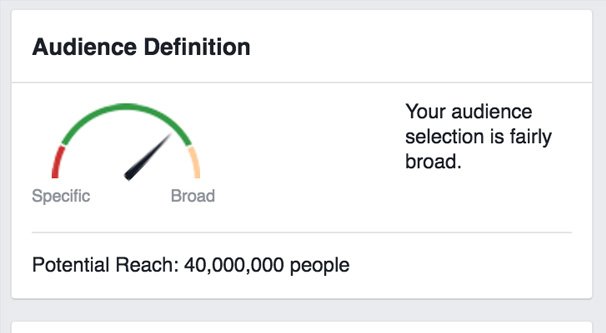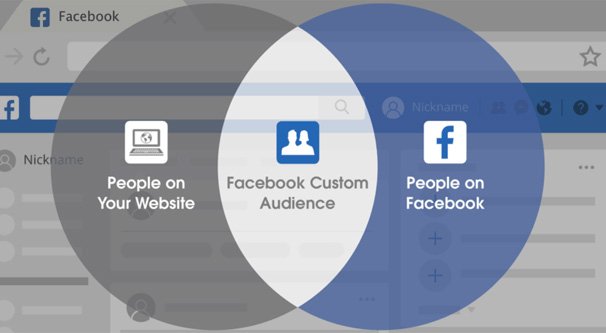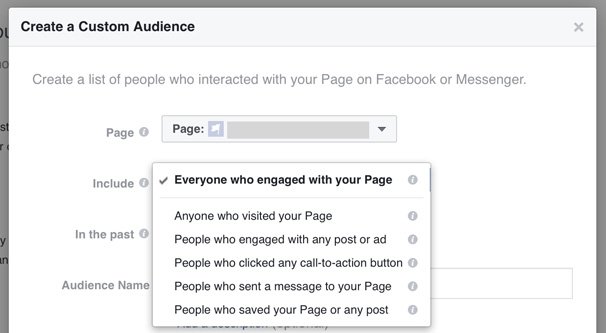How to Use Retargeting to Boost Your Engagement

Retargeting is a clever technique made possible by modern tracking technology and widespread use of social media. With it, you can boost pretty much every result you could want with your ads; more engagement, more clicks, more follows, and more conversions. I’m going to focus on engagement today, but just keep in mind that you can get similar results with other objectives as well.
What is Retargeting and How Does It Work?
Retargeting is pretty much as simple as it sounds, at least in concept. You target, and then you re-target.
Let’s say you want to run some ads, and the target audience according to Facebook is 1,000,000 people. That may seem like a lot, but with the scope of Facebook, it’s actually a rather small audience. Of course, you aren’t going to actually reach a million people, your budget isn’t that big. You run the ads for a while and you find that 50,000 people saw the ad. That’s your ACTUAL audience, the reach of the ad.
Now, of those 50,000 people, let’s say that 10,000 of them took some kind of interaction with the ad. Some of them clicked through the link, some of them left a comment on the post, some of them shared the post, and so on.
You want more of that engagement. 40,000 people saw your ad but didn’t take action. What if you could reach out to those people specifically and give them a second chance?
If you run your ads again the way they are, you might get another 50,000 people to see your ads, but out of a million people in the target audience, the chances of there being overlap between the first run and the second run is very slim.
This is where Facebook’s custom audience features come into play. You create a custom audience made up of the people who engaged with your ad and create a new ad reaching out to them specifically.
This is beneficial for two reasons. The first is that these people are already “warmed up” by having seen your ad before. They’re at least familiar in passing with your imagery, your name, and your content. Your second ad can take advantage of that to further the conversation. They’re no longer a completely cold audience.
The second benefit is that, because this is a narrow custom audience, it’s generally going to be cheaper to get more engagement from it than you would get from ads trying to reach a more competitive audience, a larger audience, or a colder audience. It’s been shown time and again that retargeting campaigns tend to have higher returns for lower costs than standard campaigns.
You can further enhance your retargeting by going even deeper and more segmented. For example, in the situation above, you can retarget the 40,000 people who saw but didn’t engage with your ads, but you can also retarget the 10,000 people who did. In fact, you can create an even smaller audience specifically made up of the people who clicked through to your website, and focus ads directly on them.
Facebook Custom Audiences
Facebook is one of the best platforms for retargeting because they have a wide variety of custom audiences available to make with just a few clicks. You don’t have to painstakingly harvest, verify, and submit email lists or anything else. All you need to do is have the Facebook tracking pixel enabled on your site, run some ads to harvest data, and click in the right places to create the audiences.
Every Facebook page owner is able to create up to 500 custom audiences, using one of four types of audience. These are:
- Website custom audiences, which are made up of users tracked on your website via the Facebook pixel.
- Mobile app custom audiences, which are made up of users who use your mobile apps as tracked by Facebook.
- Customer list custom audiences, which are made up of mailing lists or lists of customer information you submit to Facebook.
- Engagement custom audiences, which are custom audiences made up of people who engage with your content on Facebook.
You can also create a lookalike audience out of any custom audience. A lookalike audience is a custom audience made up of people who share characteristics, such as demographics and interests, with the people in an existing custom audience, but who are not part of that audience.
Engagement Custom Audiences
Since we’re talking today about boosting engagement, it stands to reason that the engagement custom audience is your best option for retargeting.
To create an engagement custom audience, you need to be actively using Facebook and its ecosystem of apps and services, otherwise you have no data to use. You can create an engagement audience based on one of several types of engagement.
- People who have watched your videos uploaded to Facebook.
- People who have filled out a lead generation form.
- People who engage with your Instant Experiences.
- People who engage with your Page and the posts you make.
- People who engage with a linked Instagram Business profile.
- People who engage with event pages you’ve run ads to promote.
Engagement custom audiences allow you to specify a duration for the engagement before it falls off the audience. For example, if you specify 30 days, your audience is made up of everyone who has taken that particular kind of engagement action in the last 30 days. New people will be added to the audience as the engage, and people who haven’t engaged in 30+ days will be removed from the audience. Custom audiences are constantly fresh, so you don’t need to keep re-creating them every month or anything of the sort. The maximum duration you can use is one year.
Creating an engagement custom audience has slightly different instructions for each type of audience listed in the bullets above. You can check this page for creation instructions for each, down at the bottom.
You can also create custom audiences made up of sub-groups of people in the main audience. This is mostly useful for large pages with millions of followers, unfortunately, because at lower numbers the audience segment may be too small to target. For example, for “people who engage with your page” you can make sub-audiences out of “people who saved your page or a post”, “people who sent a message to your page”, “people who clicked your call to action button”, “people who engaged with a post or ad” and “anyone who visited your page.”
Facebook’s minimum audience size is 100 people, so the threshold is pretty low, but it’s not unreasonable for small brands. Additionally, if you want to make a lookalike audience, it works best if you have closer to 1,000 people in the audience.
Using a Custom Audience for Retargeting
In order to make the best use out of an engagement custom audience for retargeting, you need to do several things.
First, you need to be publishing content, and perhaps running ads, focusing on getting your baseline engagement. Convert your posts into promoted posts with the engagement objective to get a larger custom audience. You can simply continue with organic post publication if you want, paying for ads isn’t a requirement for this step, it just works better the more people you have.
Second, you need to create ads that target your custom audience. When you create a new ad, in the ad set level, you can choose a custom audience. Choose your existing saved engagement audience to use.
Last, for your ad copy, make sure to think about the kinds of people who will be seeing your ads. For example, if they’re people who watched your videos, you can promote an ad that has a new video to that audience. If they’re people who like and share your posts, you can promote new content you want to get more engagement on. Alternatively, you can use this form of custom audience to attempt to convert followers into website visitors or conversions.
Other Retargeting Strategies
You’re not limited to using engagement audiences for retargeting; you can use any custom audience. The only thing that makes it retargeting is using an audience of people who have already seen some of your content or ads.
Slow progress. The first strategy is to just run broad, low-key, ongoing retargeting ads. Use a custom audience of people who engage with your content, and simply encourage them to continue engaging with your content. There’s no need to rush them into the deep end and demand a purchase immediately. In fact, most people who have only just discovered your brand won’t be in the market for your product right away anyways. Just run ads to keep these people in your orbit until such time as they’re ready to take the next step.
Different forms of retargeting audiences can do this in different ways. For example, if you publish videos, you can create an engagement audience with the sub-audience definition of “people who have watched more than 50% of your video.” This will be an audience of the people most engaged in your content – and the ones that click play and walk away, of course – which you can target with future videos or “next steps” from having seen the video.
Another option is to run a “collection” ad, which showcases several different products. You can then run follow-up retargeting ads for people who engaged most with individual products.
Timely incentives. One of the most common forms of retargeting is the incentive showcase. A lot of people will click through and visit your product pages, but won’t make a purchase. Some of them just don’t want your product, but others might have something holding them back. You can run ads retargeting these people and offering them some incentive – a free trial, a free upgrade, a free month, a cheaper price – and encourage them to make their purchase as soon as possible. If you indicate that your deal is going away, you encourage them to convert now, rather than continue waiting.
If you run this kind of ad, make sure to exclude “people who made a purchase” from your custom audience. Nothing is worse than a customer immediately seen an ad for the same product they bought, but cheaper or with an added bonus.
Reconnection. One great audience to target with a retargeting campaign is “people who haven’t interacted with your brand recently.” You can do this on a few different levels:
- Users who used to engage with your posts but haven’t in months.
- Users who made a purchase but haven’t made another recently.
- Customers who cancelled some time ago but might be interested in coming back.
You can run ads targeting these audiences to reach them and try to entice them to come back. Some users might have simply slipped from the EdgeRank ratings and no longer see your posts; these ads can bring them back. Some customers might want to come back with the right incentive. It’s all up to you to figure out the right deal to offer to the right people.
Abandonment Issues. You can create a specific audience made up of people who got far enough in your purchase process to have items in their cart, but who have not made it all the way to the confirmation page to become a customer. You can run ads that are aimed at getting them to finish that process. They’re obviously interested, you just have to identify that one roadblock and fix it.
How do you like to use retargeting? The sky is the limit when you have a great audience at your fingertips.









